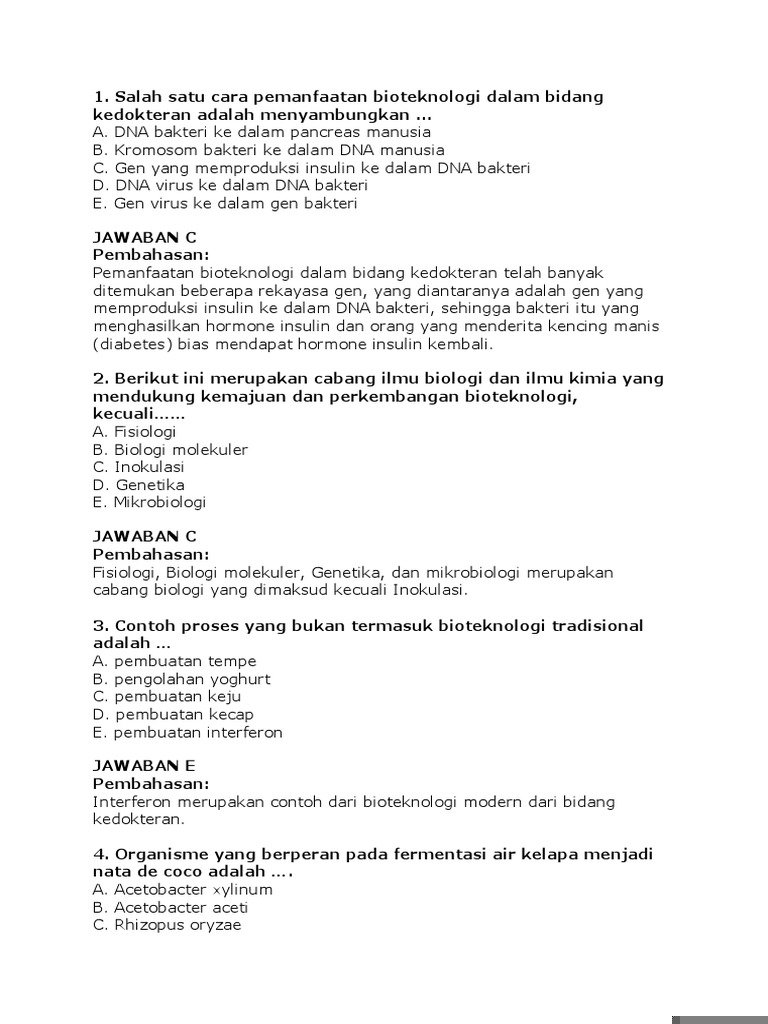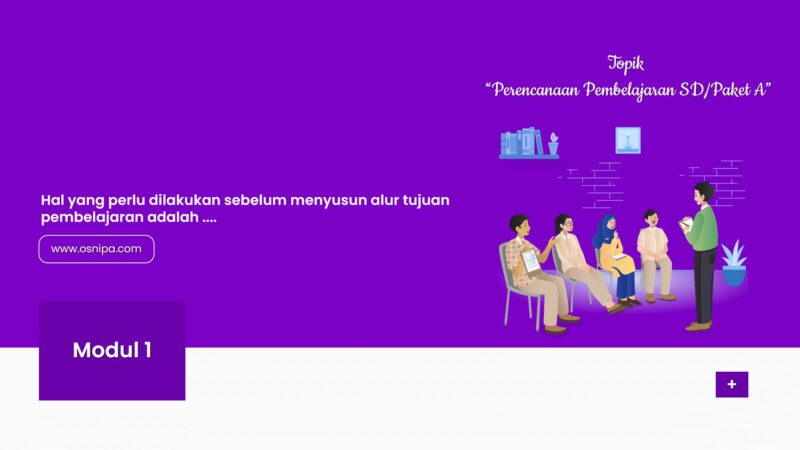Salah Satu Cara Pemanfaatan Bioteknologi Dalam Bidang Kedokteran Adalah Menyambungkan Jaringan Sel Untuk Kesehatan

Biotechnology plays a crucial role in modern medicine, and one of its fascinating applications is connecting different biological systems. Salah satu cara pemanfaatan bioteknologi dalam bidang kedokteran adalah menyambungkan various components to enhance therapeutic outcomes. This innovative approach enables scientists to design targeted treatments that can significantly improve patient care.
By integrating genetic, cellular, and molecular techniques, researchers push the boundaries of traditional medicine, offering new hope for complex diseases. The intersection of biotechnology and medicine not only advances treatment options but also opens doors for groundbreaking research.
salah satu cara pemanfaatan bioteknologi dalam bidang kedokteran adalah menyambungkan
Biotechnology is a fascinating field that plays a crucial role in medicine today. One of the most exciting ways that biotechnology is utilized in medicine is through the process of connecting or linking various biological systems and components. This section will explore how connecting different elements in biology can lead to remarkable advancements in medical treatments and diagnostics.
The Basics of Biotechnology in Medicine
Biotechnology uses living organisms or systems to develop products and technologies that improve human health. In medicine, biotechnology finds applications in:
- Drug development
- Genetic testing and therapy
- Diagnostics
- Tissue engineering
- Vaccines and immunotherapy
These applications often involve complex processes where scientists connect biological materials like DNA, proteins, or cells to achieve specific results.
Understanding the Concept of “Connecting” in Biotechnology
When we talk about “connecting” in biotechnology, we refer to the ways scientists integrate various biological elements. This could include the following:
Linking DNA to Create Recombinant Proteins
Recombinant DNA technology allows scientists to combine DNA from different sources. By connecting segments of DNA, they can produce proteins that serve therapeutic purposes. Here’s how it works:
1. **Isolating DNA:** Scientists extract DNA from both the host organism and the organism providing the desired gene.
2. **Cutting and Joining DNA:** Enzymes cut the DNA at specific sequences, allowing for the insertion of genetic material from one organism into another.
3. **Cloning:** The modified DNA is then introduced into a host cell, which replicates the DNA and produces the desired protein.
This method is crucial for producing insulin for diabetes patients, growth hormones, and various antibodies used in treatments.
Connecting Cells: Tissue Engineering
Tissue engineering illustrates how connecting biological materials can lead to innovative solutions for organ replacement or repair. It involves:
– **Scaffolding:** Creating a structural framework to support cell growth.
– **Cell Seeding:** Introducing cells onto the scaffold to expand and form tissue.
– **Growth Factors:** Using biochemical signals to encourage the cells to grow and differentiate into the desired tissue type.
Researchers have developed artificial skin, cartilage, and even attempts to create functional heart tissue by effectively connecting these elements.
Biotechnology in Disease Treatment Through Genetic Engineering
Genetic engineering, a branch of biotechnology, allows for the precise connection of genetic materials to facilitate disease treatment.
Gene Therapy
Gene therapy involves altering the genes inside a person’s cells to treat or prevent disease. This process typically includes the following steps:
1. **Identifying the Defective Gene:** Scientists locate the gene responsible for a specific disorder.
2. **Designing a Replacement Gene:** A healthy copy of the gene is created.
3. **Delivery Mechanism:** The replacement gene is delivered to the patient’s cells using vectors, often viruses that have been modified to be harmless.
This technique shows promise for treating genetic disorders like cystic fibrosis and muscular dystrophy.
CRISPR Technology
CRISPR is one of the most powerful tools in genetic engineering. It allows for targeted modifications in DNA. Here is how it connects the elements:
– **Guide RNA:** Researchers design RNA sequences that match the target DNA they want to edit.
– **Cas9 Enzyme:** This enzyme acts as a molecular scissors, cutting the DNA at the specified site.
– **Repair Mechanism:** The cell’s natural repair processes either repair the cut, which can result in a gene being disabled, or incorporate new genetic material.
CRISPR technology revolutionizes medicine by allowing precise edits to be made, potentially curing genetic diseases.
Connecting Biology and Technology: The Role of Bioinformatics
The fusion of biology and technology, known as bioinformatics, plays a pivotal role in medicine. It involves the use of software and algorithms to analyze biological data, particularly in genomics.
Data Integration
Bioinformatics allows researchers to connect vast amounts of biological data from different sources. This can include:
– **Genomic Data:** Information on DNA sequences and variations.
– **Proteomic Data:** Analysis of proteins and their functions.
– **Clinical Data:** Patient information, treatment responses, and outcomes.
By connecting these data sets, scientists can identify patterns, understand disease mechanisms, and develop personalized medicine approaches.
Machine Learning in Medicine
Machine learning algorithms can analyze connected data to improve diagnostics and treatment plans. For instance, they help in:
– **Predicting Disease Outcomes:** Using patient data to foresee responses to treatments.
– **Identifying New Therapeutics:** Finding connections between genetic variations and drug responses.
These advancements push the boundaries of how treatment can be optimized for individual patients.
Applications of Biotechnology in Diagnostics
Connecting biological elements also plays a significant role in developing diagnostics, which is essential for disease detection and monitoring.
Biomarkers Detection
Biotechnology enables the identification of biomarkers – indicators of biological processes or diseases. Key steps include:
1. **Isolation of Biomolecules:** Scientists extract proteins, DNA, or RNA from biological samples.
2. **Analyzing Connections:** Techniques like ELISA or PCR are employed to identify the presence of specific biomarkers.
3. **Diagnostic Results:** The data obtained connects the presence of biomarkers with specific diseases, aiding in accurate diagnosis.
For example, detecting cancer biomarkers in blood can help identify the disease early, leading to better treatment outcomes.
Rapid Test Kits
Advancements in biotechnology have led to the development of rapid test kits, which connect science and medicine in the following way:
– **Antigen or Antibody Detection:** Kits can quickly test for the presence of specific pathogens in a patient’s sample.
– **Easy Accessibility:** These tests provide immediate results, allowing for quicker medical decisions.
During the COVID-19 pandemic, rapid antigen tests became vital tools for screening and controlling virus spread.
Ethical Considerations in Biotechnology
As biotechnology advances, ethical considerations regarding connecting biological elements arise. Important topics include:
Genetic Privacy
With genetic testing becoming more common, concerns about how genetic information is used and stored emerge. Patients should be informed about:
– **Informed Consent:** Understanding how their genetic information will be used.
– **Data Security:** Assurance that their data will be protected against unauthorized access.
Designer Babies
The potential to edit genes raises questions about the implications of “designer babies.” This involves connecting scientific advancements with social ethics. Questions to consider include:
– **Accessibility:** Will gene editing be available to everyone or only those who can afford it?
– **Long-term Effects:** What impact might genetic modifications have on future generations?
Discussions around these issues are essential as biotechnology continues to evolve.
Future Directions in Biotechnology and Medicine
The future of biotechnology in medicine holds exciting possibilities. Some anticipated trends include:
Personalized Medicine
As technologies improve, treatments will likely become more personalized. This means:
– **Tailored Treatments:** Medical care tailored to the genetic makeup of individual patients.
– **Precision Diagnostics:** More accurate and specific tests that connect symptoms to treatments effectively.
Integration of Artificial Intelligence
Artificial intelligence can enhance connectivity in biotechnology by:
– **Data Analysis:** AI can analyze vast amounts of medical data to find trends and correlations.
– **Predictive Modeling:** Predicting patient responses to treatments based on connected data patterns.
These technologies create a more efficient healthcare system.
In conclusion, the application of biotechnology in medicine through the process of connecting various biological components is transforming the landscape of healthcare. From genetic engineering and personalized medicine to advanced diagnostics and ethical considerations, this interconnected approach holds the promise of improving patient outcomes and revolutionizing treatment modalities. As research continues to advance, the future of biotechnology in medicine shines brightly, offering hope and solutions to many health challenges.
Aplikasi Bioteknologi dalam Bidang Peternakan || Video Presentasi
Frequently Asked Questions
“`html
What are the main applications of biotechnology in medicine?
Biotechnology plays a significant role in medicine with applications such as the development of vaccines, gene therapy, regenerative medicine, and the production of biologics like insulin and monoclonal antibodies. These innovations improve disease diagnosis, treatment, and prevention through advanced techniques and biological products.
How does biotechnology contribute to disease diagnosis?
Biotechnology enhances disease diagnosis through techniques like polymerase chain reaction (PCR) and next-generation sequencing (NGS). These methods allow for the rapid and accurate detection of pathogens, genetic disorders, and cancer mutations, enabling healthcare providers to make informed decisions on treatment plans.
What role does biotechnology play in personalized medicine?
Biotechnology plays a crucial role in personalized medicine by enabling the tailoring of treatments based on an individual’s genetic makeup. Through genetic testing and analysis, healthcare professionals can choose therapies that are most effective for a patient’s specific genetic profile, leading to improved outcomes and reduced adverse effects.
Can biotechnology help in vaccine development?
Yes, biotechnology significantly aids in vaccine development. Techniques such as recombinant DNA technology allow scientists to create vaccines that mimic the pathogen’s structure, stimulating an immune response without causing the disease. This approach leads to safer and more effective vaccines, as seen in the rapid development of COVID-19 vaccines.
What impact does biotechnology have on pharmaceutical production?
Biotechnology revolutionizes pharmaceutical production by utilizing living organisms to produce drugs more efficiently and at a lower cost. Methods like fermentation and cell culture enable the mass production of complex biological drugs, which can enhance treatment options for patients with various health conditions.
“`
Final Thoughts
Salah satu cara pemanfaatan bioteknologi dalam bidang kedokteran adalah menyambungkan pemahaman ilmiah dengan praktik klinis. Dengan menciptakan terapi gen dan vaksin yang lebih efektif, bioteknologi meningkatkan kemampuan medis kita. Hal ini tidak hanya memperbaiki kualitas hidup pasien, tetapi juga membuka jalan menuju penyembuhan penyakit yang sebelumnya sulit diatasi. Inovasi ini menunjukkan potensi besar bioteknologi dalam mengatasi tantangan kesehatan global.







